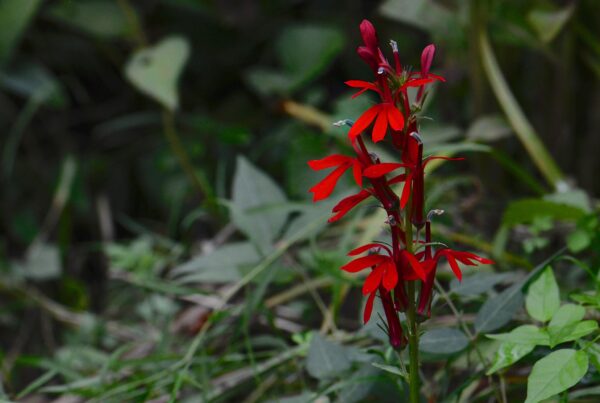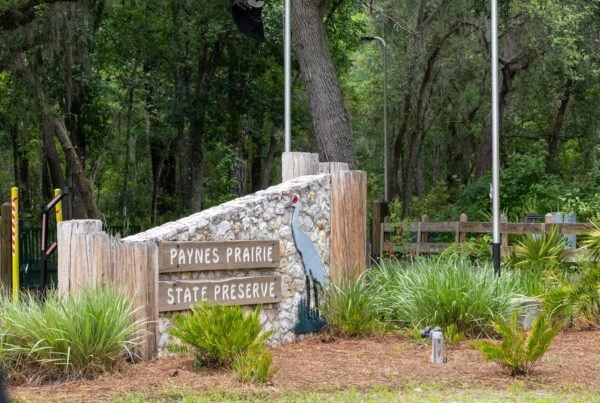As many of us are staying home during the COVID-19 pandemic, it may give us a chance to enjoy the natural world close at hand. The first bloom on a sunflower is a welcome sign of spring. Last week in our garden this mighty sunflower, already over 6 feet tall, produced its first flower.
Sunflowers are very easy to grow, with native varieties as well as cultured varieties (cultivars) suited to our climate. They are fast growers and can reach over 8 feet tall. There are also dwarf varieties that can be grown in smaller spaces. Helianthus annus are the tall plants with large heads that often come to mind when people think of sunflowers.
Florida has several varieties of native sunflowers. One native is the swamp sunflower, Helianthus angustifolius. This perennial grows 4-6 feet tall, blooms in the fall, and is both salt and flood tolerant. Butterflies flock to the flowers for nectar.
Last year a neighbor invited me to dig up some of the volunteer sunflowers in his yard, so I planted a few around our garden. They took off, grew tall, and produced lots of flowers well into the fall. They got pretty unwieldy but were always admired by neighbors passing by. Not only did neighbors admire these sunflowers, but so did the bees. They were a favorite dining spot of some bumblebees, and many sweat bees, which are valuable pollinators.
There’s still time to plant sunflowers in some areas of our state. Many varieties of sunflowers are easily started from seeds and make a great gardening project with kids. The seeds can be started in small pots and transplanted or they can be planted right in the ground. Some smaller varieties can be grown in a large pot on a patio.






